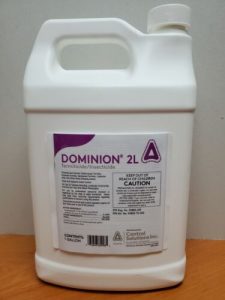With the production and availability of the various types of insect killers, the most effective insecticide for Japanese beetles has proven opinions wrong and they are not to be labelled as commonly as others are in the market.
Everyone knows how dangerous the Japanese beetles can be to the plants over which the farmer awaits huge harvest. What however distinguishes this very efficacious insecticide is the quick reaction it produces when applied to the right location where it is indeed needed.
While the larvae of Japanese beetles feed on the roots of many genera of grasses, the adults consume the leaves of a much wider range of hosts, including the following crops: cannabis, strawberry, tomato, beans, pepper, grape, hop, rose, cherry, plum, pear, peach, raspberry, blackberry, corn, pea, okra, and blueberry.
Japanese beetle larvae, which are called white grubs, feast on plant roots and can create dead patches in the grass. Adult Japanese beetles are a metallic green and once they emerge from the ground in the late Spring or early Summertime, they will immediately begin feeding on to yard plants. It is because of these reasons that Japanese beetle control is necessary wherever they have set up shop.
Practically, when present in small numbers, the beetles may be manually controlled using a soap-water spray mixture, shaking a plant in the morning hours and disposing of the fallen beetles, or simply picking them off attractions such as rose flowers since the presence of beetles attracts more beetles to that plant.
Features of Japanese Beetles
Some of the things by which you can identify with the characteristics of Japanese Beetles:
- Adult Japanese Beetles range between 1/3rd of an inch to 0.5 an inch long.
- Their head and thorax region are usually a shiny metallic green while their wing covers are copper-colored.
- They have patches of white hairs at the ends of their backside and along the tips of their abdominal area.
- Japanese Beetle adults can be found inside of flowers feeding on petals and leaves or laying eggs in the grass around your yard.
- Japanese Beetle larvae are milky white-colored grubs with beige or brownish heads. Their bodies curl into a C-shape and they have visible legs.
- The grubs range between 1/8th of an inch up to 1 inch long and stand out from other white grubs with their hairy or spiny appearance.
- The larvae can be found in the soil of turf areas.
Read Also: How to Treat Webworms in Grass and Tree
Japanese Beetles Most Effective Antidote
As stubborn as this particular plant might be, the most effective insecticide for Japanese beetles or shall we say the one that can really control it, or reduce it is explained right before you below. Check it out!
-
Dominion 2L
The most effective insecticide to treat Japanese Beetles is Dominion 2L which can be conducted as a broadcast treatment of Dominion 2L to the active areas.
Dominion 2L is a neonicotinoid insecticide that works systemically to kill larvae that may be feeding on roots in the soil as well as kill adults on contact. It can be safely be applied to plants without causing any harm and will kill any Japanese Beetle that decides to eat treated turf and vegetation.
Determine how much Dominion 2L you will need to mix by first calculating the square footage of the area you wish to treat. To do this, measure (in feet) and multiply the area length times the width (length x width = square footage). Japanese Beetles should be treated at a rate of 0.46 to 0.6 fl. oz. in a gallon of water to treat 1,000 sq. ft.
We recommend using a 20-gallon hose-end sprayer for large areas to more efficiently treat the entire lawn. If you have a smaller residential area to treat, use a hand-pump sprayer. For hose-end sprayers, attach the spray nozzle to the hose and then add the proper amount of Dominion 2L to the reservoir with the correct amount of water.
For pump sprayers, fill the sprayer halfway with water, add the appropriate amount of Dominion 2L based on your calculations and then fill with the remaining half-gallon of water and agitate the sprayer until the product is well mixed.
Start from one end of the yard and work your way over the entire turf area, preferably on a fan spray setting for even coverage. Next, treat your garden plants, ornamentals and shrubs, spraying to wet but not to the point of runoff. Make sure to also spray the undersides of leaves, since Japanese Beetles like to hide in these areas. Apply on a calm day when wind speeds are low to minimize drift.

